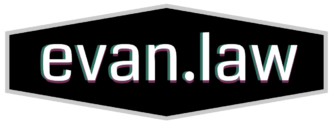Tamara Fields and Heather Creach, representing the estates of their late husbands and joined by Creach’s two minor children, sued Twitter, Inc. Plaintiffs alleged that the platform knowingly provided material support to ISIS, enabling the terrorist organization to carry out the 2015 attack in Jordan that killed their loved ones. The lawsuit sought damages under the Anti-Terrorism Act (ATA), which allows U.S. nationals injured by terrorism to seek compensation.
Plaintiffs alleged that defendant knowingly and recklessly provided ISIS with access to its platform, including tools such as direct messaging. Plaintiffs argued that these services allowed ISIS to spread propaganda, recruit followers, raise funds, and coordinate operations, ultimately contributing to the attack. Defendant moved to dismiss the case, arguing that plaintiffs failed to show a direct connection between its actions and the attack. Defendant also invoked Section 230 of the Communications Decency Act, which shields platforms from liability for content created by users.
The district court agreed with defendant and dismissed the case, finding that plaintiffs had not established proximate causation under the ATA. Plaintiffs appealed, but the Ninth Circuit upheld the dismissal. The appellate court ruled that plaintiffs failed to demonstrate a direct link between defendant’s alleged support and the attack. While plaintiffs showed that ISIS used defendant’s platform for various purposes, the court found no evidence connecting those activities to the specific attack in Jordan. The court emphasized that the ATA requires a clear, direct relationship between defendant’s conduct and the harm suffered.
The court did not address defendant’s arguments under Section 230, as the lack of proximate causation was sufficient to resolve the case. Accordingly, this decision helped clarify the legal limits of liability for platforms under the ATA and highlighted the challenges of holding technology companies accountable for how their services are used by third parties.
Three Reasons Why This Case Matters:
- Sets the Bar for Proximate Cause: The ruling established that a direct causal link is essential for liability under the Anti-Terrorism Act.
- Limits Platform Liability: The decision underscores the difficulty of holding online platforms accountable for misuse of their services by bad actors.
- Reinforces Section 230’s Role: Although not directly addressed, the case highlights the protections Section 230 offers to tech companies.
Fields v. Twitter, Inc., 881 F.3d 739 (9th Cir. 2018)

 Defendant school district refused to pay a portion of the settlement payments ($80,000), claiming plaintiff’s disclosure of the settlement to his daughter violated the confidentiality provision. Plaintiff asked the trial court to enforce the settlement agreement, which it did. Defendant sought review with the Court of Appeal of Florida. On appeal, the court agreed with the school and reversed.
Defendant school district refused to pay a portion of the settlement payments ($80,000), claiming plaintiff’s disclosure of the settlement to his daughter violated the confidentiality provision. Plaintiff asked the trial court to enforce the settlement agreement, which it did. Defendant sought review with the Court of Appeal of Florida. On appeal, the court agreed with the school and reversed.